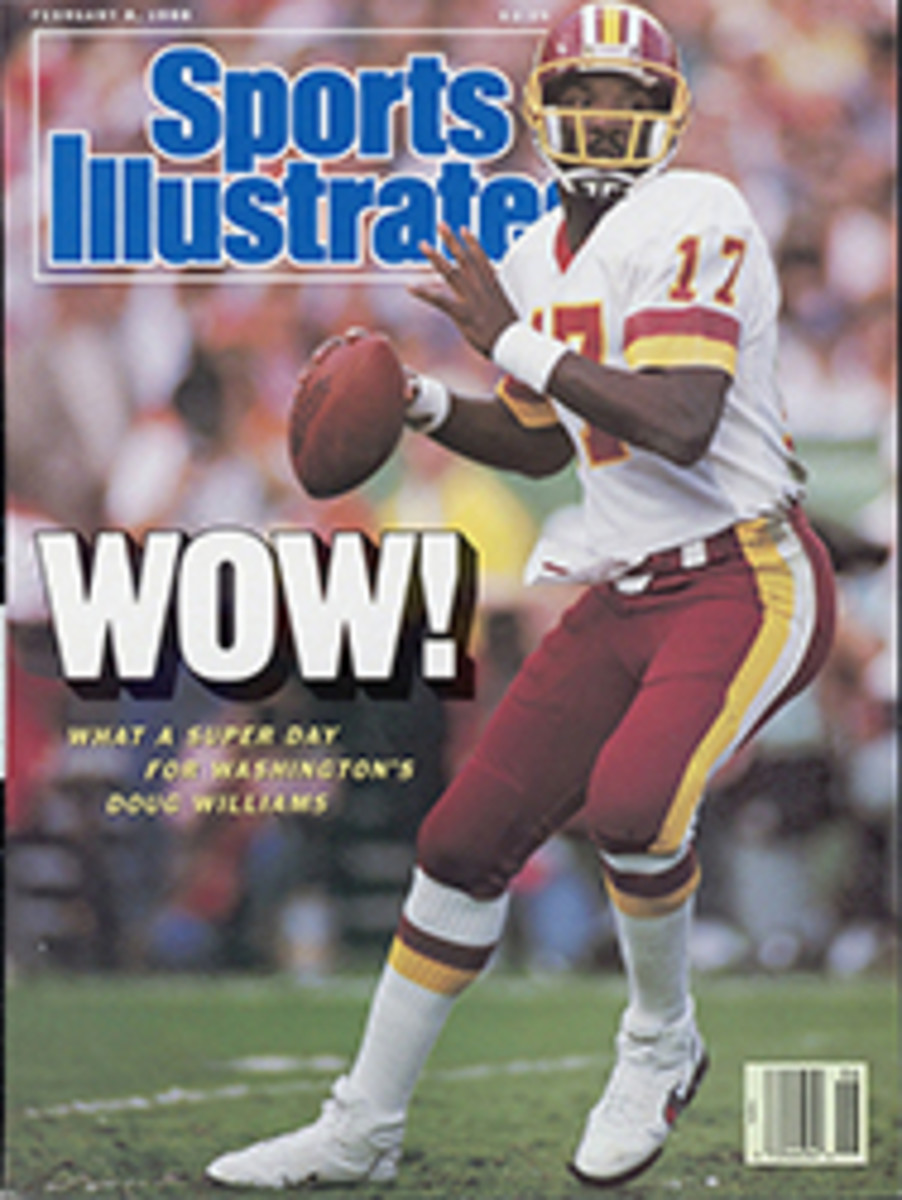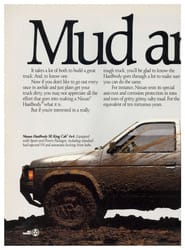
THE CAT WINS A DOGFIGHT
It was a long time coming, but last weekend's SunBank 24 Hours of Daytona produced a manufacturers' road racing battle worthy of the great showdowns of bygone days. Fittingly, it was the British who were responsible—with three howling Jaguars called Tom Cats and an attendant army of engineers and mechanics. The win was the first for Jaguar in a 24-hour race since 1957 at Le Mans, and Porsche lost at Daytona for the first time since 1976.
The Brits came fresh from winning last year's World Sports Prototype Championship; they took eight of 10 races and ended the reign of Porsche. But Daytona would be no piece of cake. In the U.S. the Jaguars were up against Holbert Racing, the team that had won the last two Daytona 24-hour races with a Porsche 962 and whose three drivers are noted overachievers. Al Holbert, the bossman, is the most successful driver in the history of the International Motor Sports Association, with 49 wins and five championships. Derek Bell is one of the most accomplished endurance drivers ever, with 23 24-hour races under his seat belt, including five wins at Le Mans and two at Daytona. And Chip Robinson is the IMSA GT-class champ.
No one in the U.S. knows more about racing Porsches than Holbert—quite naturally, since he is the head of Porsche racing in North America. He is objective, methodical and thorough in approach. "My strategy is to carefully and specifically define the car's parameters, then run it at the limits," he says. "And if the competition is beating you, then you work hard to improve the car, not drive it harder." That's Holbert the engineer talking. Says Holbert the race driver, "Other than that, we just drive the wheels off the car."
The Jaguar team was commanded by Tom Walkinshaw, a sturdy, soft-spoken Scottish multimillionaire. Walkinshaw, 39, studied business for a year at the University of Edinburgh but left at 19 because he was "keen to get on with it." "It" was both racing and business, and his success was unbroken, all the way up. Overachievers? In 1984 Walkinshaw was the European Touring Car champion, driving a Jaguar XJ-S, while off the racetrack he was building a diverse business empire that now consists of 17 companies. He's frequently described as England's answer to Roger Penske, but he just as readily calls to mind Holbert.
In 1985 he persuaded the Jaguar factory that his Tom Walkinshaw Racing team could topple the hitherto invincible Porsche factory in endurance racing if Jaguar would help him build the cars. The company agreed, and he delivered, winning the world championship just two years later. "When we started, I think it's fair to say, no one believed we could win a race, much less a world championship," he says.
The Porsche 962 was bred specifically for endurance racing and refined for five years, and its turbocharged flat-six engine is smooth and silent, making the car a luxury liner compared to Walkinshaw's Tom Cat. The nonturbocharged V-12 Jag accelerates, brakes and handles better than the 962, but it has less horsepower and a slower top speed and a poor record in 24-hour races. In other words, Daytona was a track and race for the Porsche. But the Jaguar was a car for the fans, who found its high-revving wail music to the ears.
For his three Daytona entries Walkinshaw signed nine drivers, and they were as stylish as his fender-skirted cars. The fastest trio consisted of Jan Lammers of the Netherlands and two Americans, Indy 500 champion Danny Sullivan and Davy Jones. The last is a 23-year-old who did so well when he auditioned in the Jaguar, specifically for a ride at Daytona, that he was hired by Walkinshaw Racing for the entire 21-race IMSA GT season.
In the second car was world endurance driving champion Raul Boesel, from Brazil, teamed with Englishman Martin Brundle and a Dane named John Nielsen, who would turn out to be the race's discovery. In the third car were John Colum Crichton-Stuart, earl of Dumfries County in Scotland and otherwise known as Johnny Dumfries; Grand Prix veteran John Watson from Northern Ireland; and Eddie Cheever, the American Formula 1 driver who has lived in Rome since he was a kid.
Daytona has found a formula for keeping a 24-hour race from getting boring: Put plenty of cars on the track and make the fast guys fight their way through traffic. Altogether there were 75 race cars, most of them considerably slower than the 180-mph prototypes. There were some 240 drivers, from Sullivan and fellow Indy winners A.J. Foyt and Parnelli Jones to actor Lorenzo Lamas and Olympic slalom champion Phil Mahre.
Prerace speculation was that one of the Jaguars would play rabbit in order to sucker the Porsches into overdoing. But Walkinshaw gave his drivers strict instructions to conserve their cars and not take chances in traffic. The rabbit turned out to be a Porsche driven by Price Cobb, of Texas, which led after the first hour by nearly a lap before gearbox gremlins did it in.
The gaudy gold Holbert Porsche, done up to resemble a can of Miller High Life, was there to take over the marque's familiar position in the lead. Meanwhile, the howling Tom Cats were mixing it up with various other Porsches not far behind. The agile Jaguars were darting about on the banking and were first to turn on their lights, a warning to slower cars that they were coming through.
From midnight on, the Holbert Porsche led a sister 962 owned by former endurance racing star Jim Busby and driven by the international trio of Mauro Baldi of Italy, Bob Wollek of France and Brian Redman of England. For much of the time the three Tom Cats stalked behind the Porsches. Sullivan led the Jaguar contingent most of the way and eventually passed the Busby Porsche and moved into second. When it began drizzling at 3 a.m., Lammers, who used to teach wet-driving techniques, took over for Sullivan.
The Busby team could have benefitted from Lammers's expertise; its Porsche, with Wollek at the wheel, had an excursion into the grass during the night. Unabashed by the bent bodywork, Wollek said, "I always drive at my maximum pace." And at daybreak he was doing it door-to-door with the Jaguars of Lammers and Nielsen. "It was hard on me, and it was hard on Bob Wollek," Nielsen would say. "Actually, I think that turned the race."
At this point the surviving cars were grimy, some were slimy with oil from wounded engines, and most were battered, testimony to the challenges of a night at Daytona. The Lammers Jaguar was running up front with the Holbert Porsche. As it turned out, they raced each other to a standstill—Holbert came in for a pit stop with turbocharger problems, and the Jag succumbed to terminal engine woes. Holbert would lose seven laps and go back at it, but later he would join the Jag with a blown engine.
At 10:30, with 19 hours down, the Busby Porsche and both remaining Tom Cats were within a lap. But then the Cheever-Watson-Dumfries Jag began misfiring, leaving it all down to one Porsche and one Jaguar.
It was already one of the closest 24-hour races in history. Eventually there would be 25 lead changes, most of them in the final three hours between the Nielsen-Boesel-Brundle Jag and the Busby Porsche. The latter was unique in that it sported a one-of-a-kind engine. It had been specially refined by Ed Pink, who's known for his drag-racing power plants, which are designed to last six seconds, not 24 hours. And while Baldi and Wollek were heavy-handed behind the wheel, Redman was driving equally fast but more gently. The 50-year-old Redman has twice retired from racing after deciding he was getting either too old or too cautious behind the wheel, but he couldn't stay away. Now he was driving gracefully and error-free; once, after a blowout occurred at top speed as he entered the turn onto the infield portion of Daytona's 3.56-mile road circuit. Redman coolly saved the car with a controlled spin.
"We can't shake that Jaguar," said Busby. "We're running as hard as we can, and it's been this way for 21 hours. They're not backing off and neither are we. We'll run our car right down to the ground if we have to."
Baldi may have taken his team leader a bit too literally. During the Italian's driving stint, big pieces were falling off the car. The nose section was fractured in an off-track excursion and began rubbing against a front tire, cutting the tire and forcing another pit stop. Later the driver's door flew off.
In the final hour the Jaguar was still strong, while the Porsche, a lap back, just barely held together. And it was a dramatic and somewhat historic moment when the unheralded Nielsen took the checkered flag, now nearly two laps ahead of the Busby Porsche. The second Jaguar finished 15 laps back in third place, while another Porsche took fourth. The winners had driven 2,591.68 miles—about the distance from Daytona to Los Angeles.
Earlier Walkinshaw had said that although he believed his team was capable of winning, he didn't really expect it to. "We don't have the depth of experience at Daytona that Porsche does." he said. "You have to find ways of getting yourself educated first. You wouldn't see a boxer going straight to the title fight, but that's sort of what we were up against here."
And because of his audacity, Jaguar is champion again, three decades after its last 24-hour win.
PHOTO
BILL FRAKES
The Nielsen-Boesel-Brundle Jaguar shot into the lead late in the race and kept it.
PHOTO
BILL FRAKES
The Holbert Porsche 962 flamed out in its bid for a third straight win at Daytona.
PHOTO
GEORGE TIEDEMANN
Yes, the illustrious Foyt does windows; at least he did them for co-driver Al Unser Jr.
PHOTO
GEORGE TIEDEMANN
At the wheel of the winning car, unheralded Nielsen proved to be cool when it counted.

